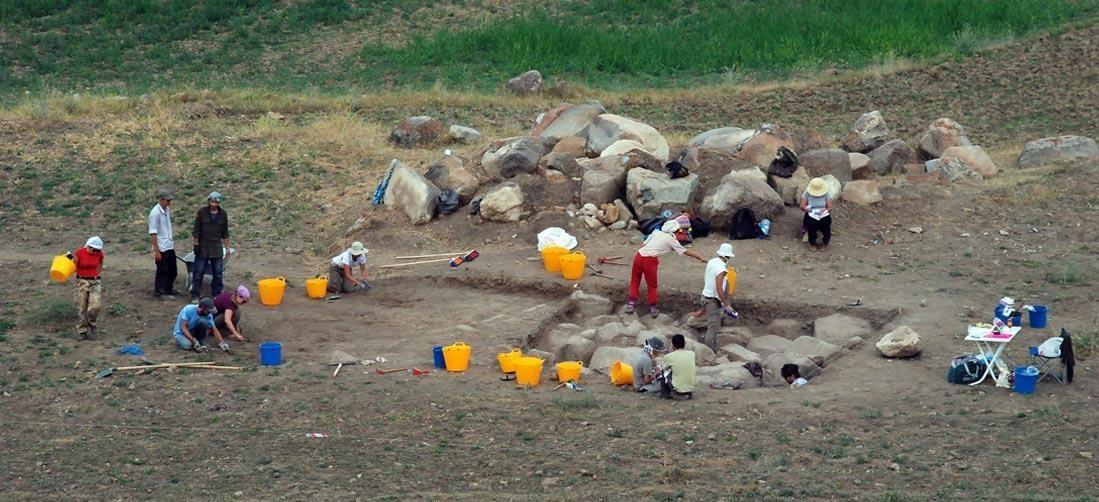Research Project
The archaeological mission to Uşaklı Höyük in central Anatolia was begun in 2008 with the aim of obtaining new information regarding settlement development in the Hittite heartland in the area enclosed by the River Kızılırmak, ancient Halys.
After the briefs visits by E. Forrer, H. H. von der Osten and P. Meriggi, the first extensive survey was carried out in 1993-1994 as part of the Kerkenes project directed by G. Summers. The information obtained during these initial visits formed the basis for our research. Cartographic materials, geological and land registry maps, as well as satellite photographs were acquired before work began in the field, mapping the site and its hinterland and creating both the topographic grid and the related system of staking out the area in order to collect materials and carry out geomagnetic prospecting.
From 2008 to 2012 prospecting was conducted both on the site and in the surrounding countryside. In 2012 the method of scraping was applied to sectors of the acropolis slopes where the survey had been less fruitful. This led to the discovery, amongst other finds. of three fragments of cuneiform tablets. In 2013 excavations got underway in the lower town and on the acropolis, with the areas examined being then increased during the 2014 and 2015 campaigns.
The research prospectives are promising and, at the moment, the team of the MAIAC is involved not only in excavating and examining the archaeological materials collected during the survey, but also in geological, geomorphological and paleo-enivronmental studies.
The survey and excavation project at Uşaklı Höyük works under the terms of a concession from the Kültür Varlıkları ve Müzeler Genel Müdürlüğü - T.C. Kültür ve Turizm Bakanlığı (General Directorate of Cultural Heritage and Museums, Ministry of Culture and Tourism, Republic of Turkey) to the University of Florence under the direction of Stefania Mazzoni and co-directed by Anacleto D'Agostino, University of Pisa. In 2012-2013 the direction was assumed by Hasan K. Şenyurt, direcotr of the Museum of Yozgat; the Turkish deputy-director in 2014 was Gülden Özkalali Ekmen, Bülent Ecevit University, Zonguldag (2014) and from 2015 is Mustafa Kibaroğlu, University of Tübingen. Representatives of the Direcotrate for Antiquities at the mission have been the state archaeologists Ertan Yilmaz, Museum of Ayidin (2008), Emel Özçelik, Museum of Eskişehir (2009), Ozan Corrado Rijavc, Directorate of Antiquities, Istanbul (2010), Sadreddin Atukeren, Museum of Manisa (2011), Serpil Ölmsez, Museum of Yozgat (2012), Gülüzar Kaçmaz, Museum of Yozgat (2013) Özgür Hacikerimli, Museum of Maraş (2014) and Ertan Yilmaz, Museum of Karaman (2015), Serpil Sandalcı, Istanbul Museum for the History of Science and Technology in Islam (2016), Salih Mehmet Kurudere, Samsum Museum, Özcan Șimşek, Istanbul Archaeological Museum.
The mission is formally recognised by the General Direction for the Promotion of Nation System of the Ministry for Foreign Affairs and International Cooperation, and has received constant support over the years from the directors of the Italian Cultural Institute at Ankara, Angela Tangianu, Francesco Servida and Gianluca Biscardi.




